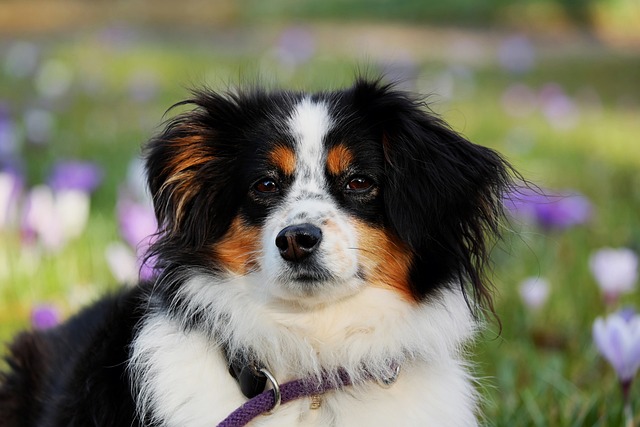
How to stop a dog attacking your dog on walks
You’re enjoying a peaceful evening walk with your Golden Retriever, Max, when suddenly a snarling off-leash dog charges from a driveway.
That moment when an unfamiliar dog locks eyes with yours during a walk, muscles tensing – it’s a pit-in-your-stomach feeling every owner dreads. Actually, preventing these confrontations starts long before teeth might show. You become your dog’s first line of defense, and it hinges on understanding the silent conversation happening right in front of you. A stiff, still posture? That’s not curiosity. A hard stare with whale eye (seeing the whites)? Far from friendly. Lip licking, yawning when not tired, or a slow, deliberate tail wag could signal rising stress, not excitement. Miss these whispers, and you’ll only hear the shout of aggression later.
Triggers on walks are sneakier than you might think. Sure, obvious things like another dog charging provoke fear, but subtle moments ignite conflict just as easily. Picture this: your leashed dog spots a squirrel, straining forward with intense focus. Suddenly, an off-leash dog bounds into that tight space. Resource guarding isn’t just about food bowls; your dog might perceive that squirrel, *or even you*, as high-value resources worth defending. Leash frustration itself builds pressure – the restraint preventing natural flight can flip into fight. Tight spaces like narrow paths or sudden loud noises? Instant amplifiers for any latent tension. Dogs don’t need a reason to dislike each other; proximity and pressure often suffice.
Here’s where instinct often leads us wrong: pulling back sharply on the leash, yelling commands, or stepping directly between the dogs. Feels protective, right? Unfortunately, it often escalates the situation. That tension travels straight down the leash, telling your dog, "Yes! Be worried!" A calmer, science-backed approach feels counterintuitive. Try the "Be a Tree" method first. Freeze your own movement, keep the leash loose but secure (a sudden jerk triggers panic), and turn your body slightly sideways – less threatening than facing head-on. Avoid direct eye contact with the approaching dog; look down or away. A soft, calm voice murmuring "easy now" helps your own dog far more than frantic commands. You’re radiating calm, not confrontation.
Putting this into practice requires a cool head and quick thinking. Spot the potential threat early? Excellent. Don’t wait. Gently guide your dog off the direct path using the loose leash, creating space. Position yourself slightly between the dogs, but at an angle, not a rigid barrier. Keep breathing steadily – shallow breaths signal fear. If the other dog keeps approaching, calmly but firmly say, "No, thank you!" or "Go home!" in a low, authoritative tone – not a shriek. Carry high-value treats you can toss *away* from you and your dog to distract an approaching canine. Practice U-turns during calm walks so it’s second nature when you need to smoothly disengage. Remember, your energy dictates the leash.
Prevention beats intervention every time. Choosing quieter walking routes at less busy hours significantly reduces encounters. Ditch the retractable leash; a standard 4-6 foot leash gives crucial control. Consider a well-fitted harness over a collar to avoid neck injuries if tension does occur. Regular training builds focus – practicing "watch me" or "leave it" makes redirecting attention possible mid-walk. Carry citronella spray (check local legality) as a last-resort deterrent, not pepper spray which can backfire horribly. Notice your own anxiety? Dogs are emotional sponges. Work on your calm confidence; it’s contagious.
Despite your best efforts, some situations demand expert eyes. If your dog consistently lunges, growls, or snaps at others, or seems perpetually fearful on walks, don’t delay. Likewise, if an attack has already occurred, professional guidance is non-negotiable. Look for certified professionals – credentials like CPDT-KA, CDBC, or CBCC-KA matter. They assess the root cause, whether it’s fear, frustration, or something deeper, and craft a safe, personalized behavior modification plan. Investing in this support isn’t failure; it’s giving your dog the best chance at safety and peace.

You’re enjoying a peaceful evening walk with your Golden Retriever, Max, when suddenly a snarling off-leash dog charges from a driveway.

Watching your dog growl, lunge, or bare their teeth can be a heart - stopping experience. Aggression in dogs isn't just a behavior issue—it's a safety concern for both your furry friend and those around them.

Picture coming home to find your usually sweet Lab, Buddy, trembling in the corner after a thunderstorm, having chewed through the door frame.

There’s nothing quite like watching your dog sprint across the yard, scoop up a toy, and bound back to you. Teaching the fetch-and-return trick isn’t just fun—it builds trust, provides exercise, and satisfies your dog’s natural instincts.

Seeing your dog limp or hesitate on walks breaks your heart, especially when they used to leap with joy. Arthritis might seem like the end of an active life, but it doesn’t have to mean goodbye to agility entirely.

Teaching your dog to pick up toys is not just a party trick—it’s a practical skill that keeps your home tidy and strengthens your bond. Dogs thrive on mental stimulation, and this task offers both challenge and reward for your furry friend.